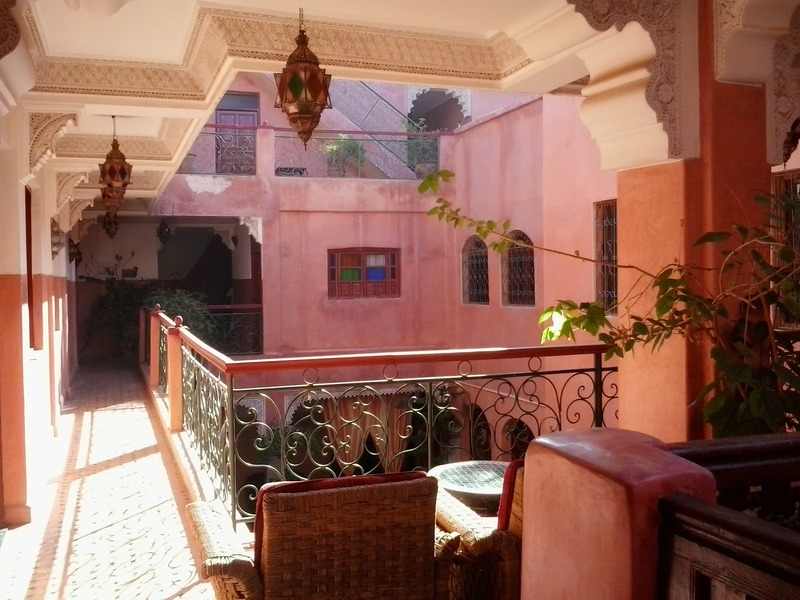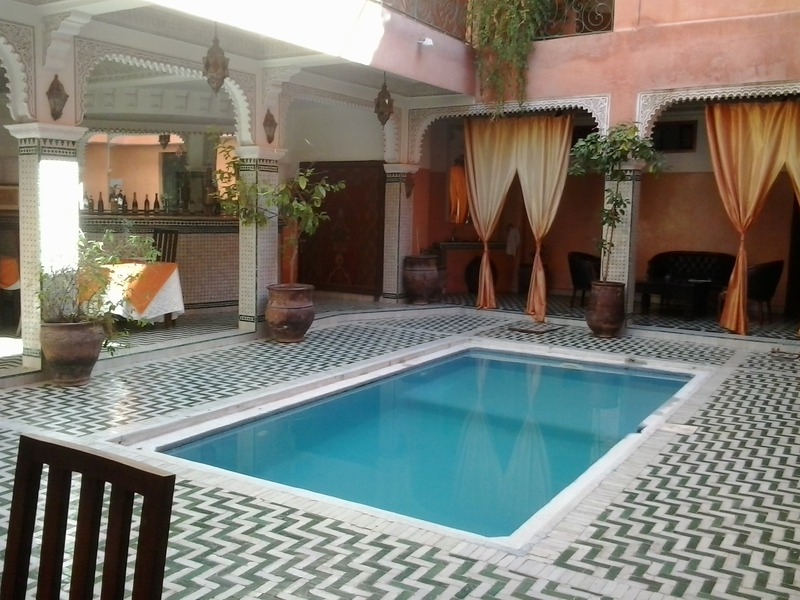
Marrakesh evokes romantic notions of a city far away in the desert, populated by Berber tribesmen and full of beautiful palaces and mosques. A market city full of bazars and camel-mounted traders who have crossed the desert and the snowy High Atlas mountains.
I got to Marrakesh by overnight train, and indeed, the landscape getting there is beautiful.





The plant in the last picture above is a cactus called indian fig, also known in Hawaii as "panini". It makes fruits that are edible after boiling and removing the thorny peel. I have never seen them grown in fields and hedges as here -- in Italy they grow in waste places.
The train line most of the way from Casablanca to Marrakesh is a single-track line, with evenly spaced stations where trains going in opposite directions can pass each other. This works well unless one of the trains is late, in which case all the trains going in the other direction must wait at a station for the delayed train. I have seen single-track lines elsewhere, most notably on the Rhaetian Railway in Switzerland.
Marrakesh is known as the red city because of the color of the stones used in most of the buildings and walls.



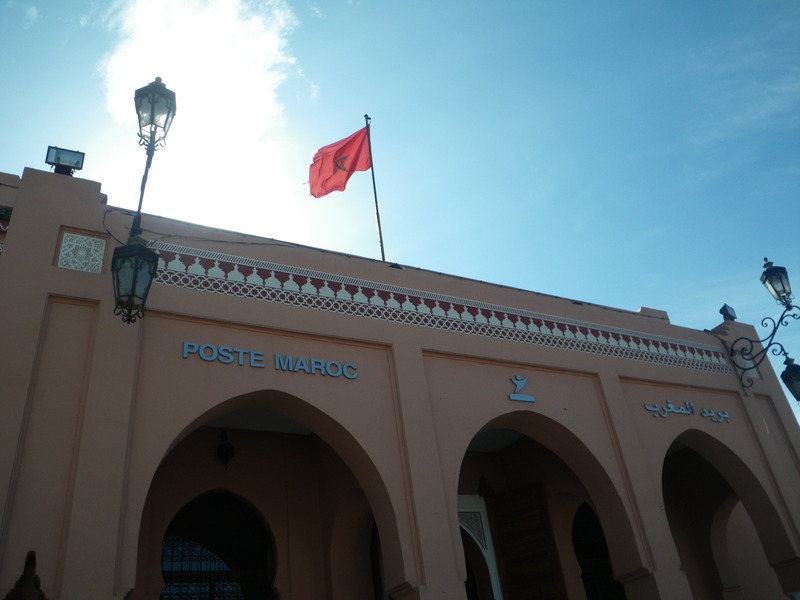

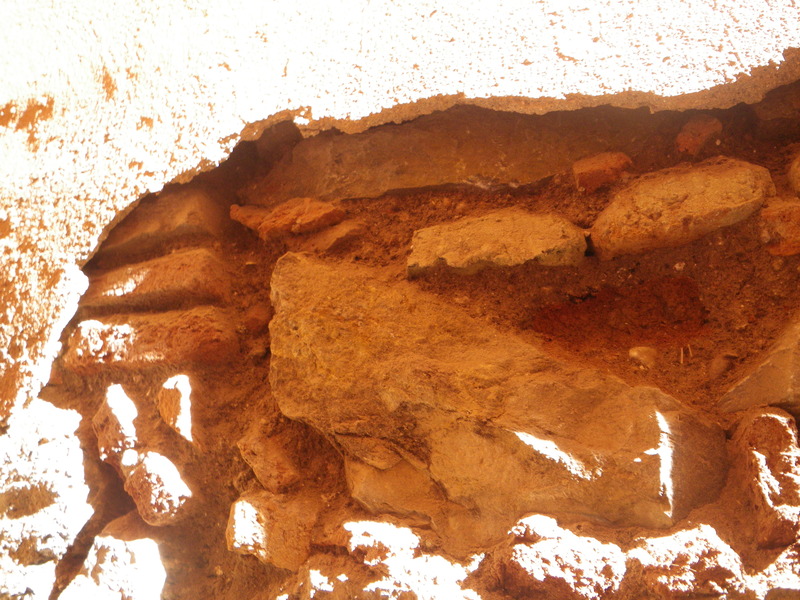

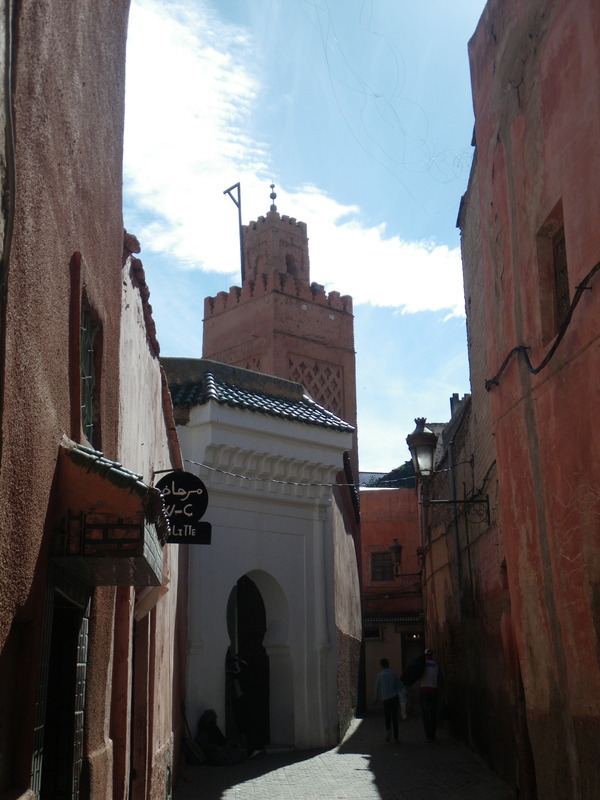



The towers in the last few pictures above are minarets, used to broadcast prayers to the muslim faithful. Originally the muezzin would climb to the top of the minaret and chant at the top of his voice. These days, loudspeakers lessen the need to climb or to use a loud voice. Although around the world I have mostly seen minarets that have a round cross section and are very thin, the minarets I have seen in Marrakesh have a square cross section and look more like the belltowers in Europe.
In Marrakesh, I have heard muezzin call and cocks crow. The first call of the muezzin was considerably earlier than the first crowing of the roosters.
The most famous mosque in Marrakesh is the Koutoubia Mosque. It was built in the 1100s and has the largest minaret I have seen in Marrakesh. It is apparently one of the oldest examples of Moroccan-Andalusian style, as craftsmen were brought from Andalusia (currently in Spain, but then part of an Islamic empire) to build the mosque.





Since I am not muslim, I was not able to enter the Koutoubia Mosque. Still, I found the outside interesting, and even the doors are beautiful.



Next to the Koutoubia mosque are the ruins of another mosque that was built at almost the same time, but not maintained, and eventually taken down.

Not far from the Koutoubia mosque is the Kasbah, the fortified seat of government, which as far as I can tell cannot be visited by anyone, muslim or not.



In one corner of the Kasbah is a courtyard surrounded by tall walls, housing tombs of the Saadi dinasty. They are in a courtyard whose existence was not known until aerial photographs revealed it in 1917. The tombs are very simple, with one room for children's tombs, one for women's tombs, and one for men's tombs, as well as tombs in the open air.




The architecture of the courtyards and buildings is beautiful.





Near the Kasbah is the Royal palace, also known as Badi palace, which was begun in 1578 and later largely destroyed to use the materials for other buildings. It is a large palace and must have been very beautiful.









The terrace at the top of the palace walls offers good views of Marrakesh and the mountains.

The inaccessible walls of the palace are very attractive to a large number of storks. I was very happy, because I have never seen storks in the wild before this trip. I saw one in Spain, but there were dozens at the Badi palace, including several nesting pairs.



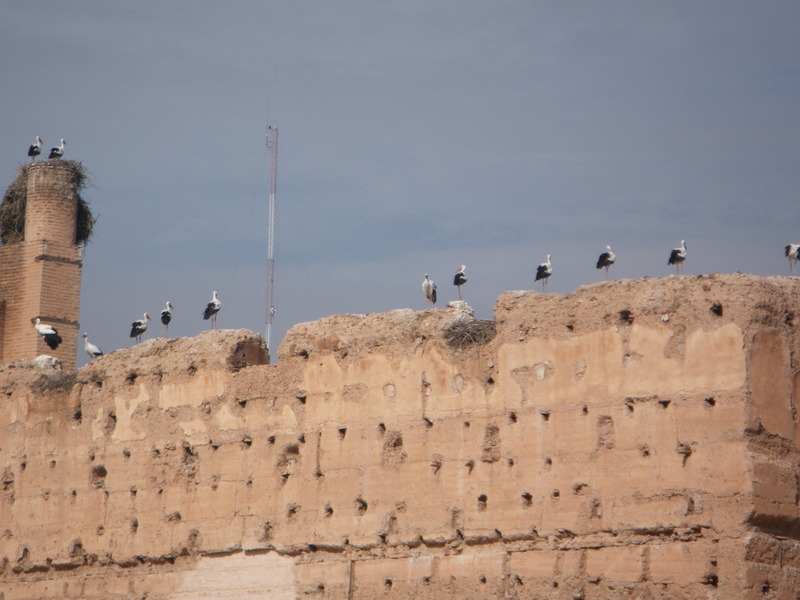







Like the Koutoubia Mosque, the Ben Youssef Madrasa, an islamic college, was also built in the 1100s. Unlike the mosque, it is open to anyone willing to buy a ticket, and they even allow photography. The school is organized around a central courtyard with a pool. I think the architecture is beautiful.







Around the courtyard are a number of rooms on two levels. To make the madrasa bigger than the single courtyard allowed, the architects added smaller, additional courtyards in two rows parallel to the main courtyard. Each smaller courtyard gives light to another set of rooms. Altogether, the Madrasa housed several hundred students.




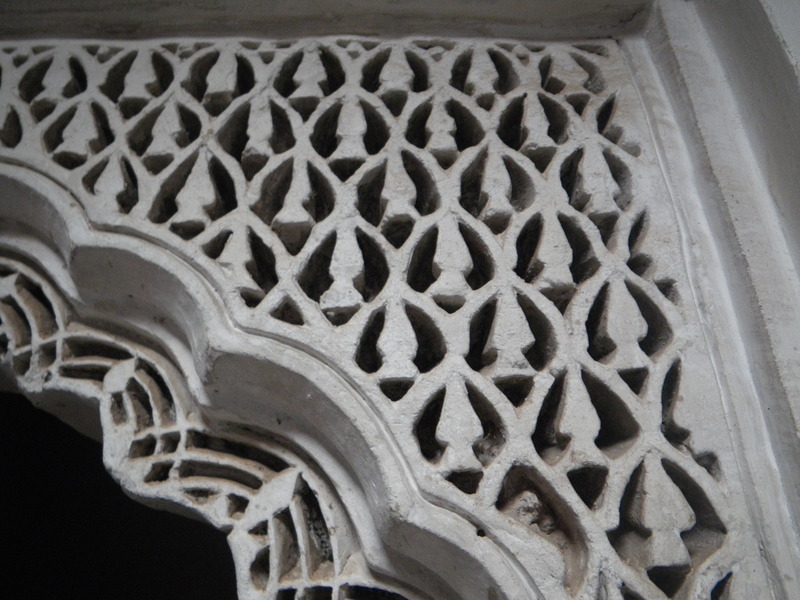



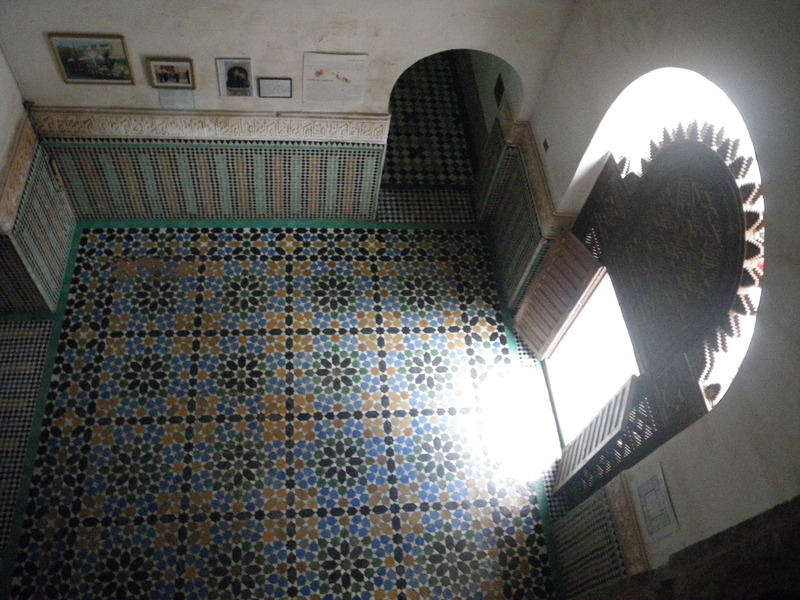

According to one of the signs, the front door of the Madrasa is made of cedar wood covered in bronze. Thanks to damage to some of the bronze, the cedar wood is visible.
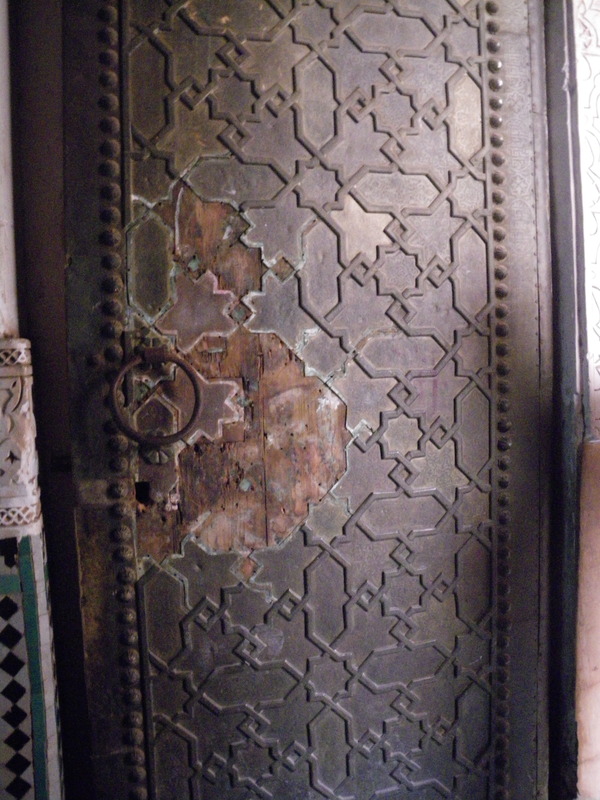
After crossing the desert, the camel caravans needed a market for their merchandise. In Marrakesh I have seen no camels, but plenty of donkeys.

The Medina (old city) of Marrakesh still has plenty of souk, alleyways full of shops, where any goods still brought on camelback, if there are any, could still be sold.
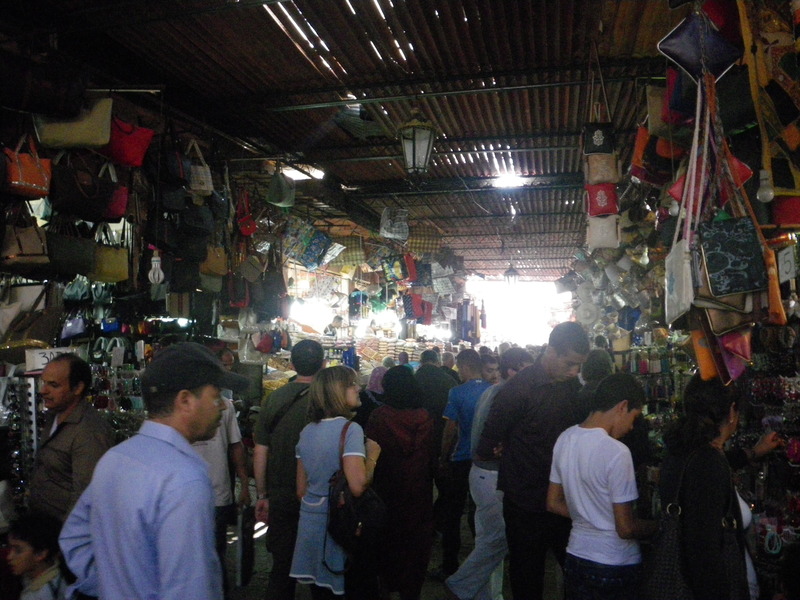



The Medina of Marrakesh also has market squares, particularly the the very large and ancient square Djeema al-Fna. I would estimate Djeema al-Fna to be larger than Red Square in Moscow. Djeema al-Fna is several hundred years older than Red Square.






A plaque in Djeema al-Fna proclaims that "The cultural space of Djamaa El-Fna has been proclaimed masterpiece of the oral and intangible heritage of humanity by UNESCO. The Jamaa El-Fna is situated in the heart of the medina. This cultural and artistic crossroads is used not only as a meeting place for local people, but also for story tellers, acrobats, musicians, dancers, snake charmers, traditional healers and fortune-tellers. It is also a place for trading and entertainment. The square is a model for urban planning giving priority to people, culture, encounter, and exchange."
Unfortunately, I did not see much in the way of story tellers, acrobats, dancers, or even traditional healers and fortune-tellers. In some of the souks there were herbal shops, but I did not see any traditional healing in the square. There was lots of trading, particularly food stalls (I enjoyed spicy lentils at one of the food stalls). I saw a few musicians, and quite a few snake charmers. I wasn't quite sure what to make of the snake charmers, but they did seem to attract lots of attention.
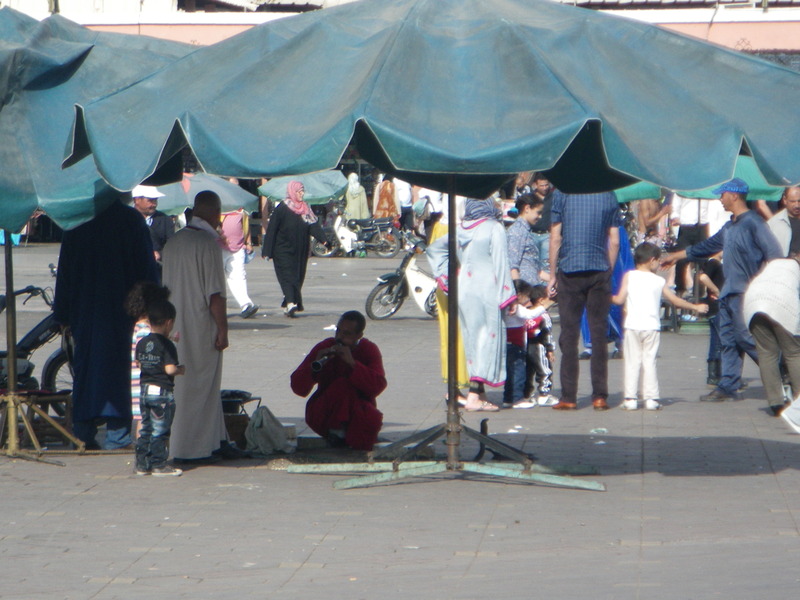
Cafe Argana on Djeema al-Fna was the scene of a terrorist bombing in 2011, with a loss of 17 lives, mostly from France, others from Canada, Holland, Portugal, Switzerland, and the United Kingdom, and two people from Morocco. A small monument has been placed in the square, and a young olive tree planted next to the monument.


Traditional houses in the Medina have their windows and rooms facing inner courtyards, and very few, if any, windows on the outside. Many of these traditional houses, designed for large families, have been converted into hotels called Riad.
